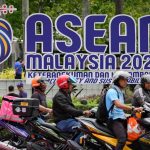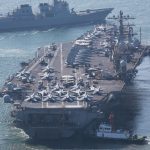South Korea’s Plan to Restore Military Agreement with North Korea
President Lee Jae-myung, during his 80th Liberation Day speech on August 15, emphasized that Seoul would “respect existing agreements and carry out feasible measures immediately.” He pledged to restore the September 19 military agreement with North Korea in a phased and proactive manner. This statement suggests that the South Korean military might take visible steps, such as reducing exercises near the border. However, North Korea declared in November 2023 that the agreement was “already obsolete” and had fully abandoned it, raising concerns about the potential weakening of Seoul’s deterrence.
The September 19 military agreement was signed in 2018 under the Moon Jae-in administration. It aimed to ease military tensions and build trust between the two Koreas. The agreement halted all hostile acts, suspended artillery and brigade-level maneuvers within 5 km of the Military Demarcation Line (MDL), and established no-exercise zones in the East and West Seas. Coastal and naval guns were to be covered and locked, and no-fly zones were set up near the MDL for aircraft and drones. Both sides also agreed to withdraw guard posts (GPs) located within 1 km of each other in the Demilitarized Zone (DMZ).
Despite these provisions, North Korea carried out over 3,600 provocations from 2018 to 2024, including shootings, artillery fire, and opening coastal gun ports. In December 2022, a North Korean drone entered South Korean airspace over the presidential office in Yongsan, raising questions about whether only South Korea was expected to follow the agreement. When North Korea launched a reconnaissance satellite in November 2023, the Yoon Suk-yeol administration suspended the agreement’s no-fly zone provision. North Korea then declared on November 23 that it would no longer be bound by the September 19 Agreement. It has continued provocations, including waste balloons and GPS-jamming attacks. Seoul responded by fully suspending the agreement in June last year and restoring GPs.
If Seoul restores the agreement, artillery drills and brigade-level maneuvers within 5 km of the MDL could halt. Resuming maritime buffer zones would stop live-fire exercises near Baengnyeong and Yeonpyeong Islands. Under the Moon administration, Marine artillery units on northwest islands transported K9 self-propelled guns to land for remote firing exercises, spending around 2 billion won annually. Similar costs could return if the agreement is restored. From February last year to May this year, South Korea restored 11 frontline GPs for 19.5 billion won. Restoring the agreement may require reducing operations or withdrawing personnel and equipment from these GPs.
No-fly zones could also return over the MDL’s eastern and western sectors, banning low-altitude reconnaissance by fighter jets, drones, and surveillance aircraft, as well as live-fire air-to-ground exercises. During the Yoon administration, the Defense Ministry warned that such restrictions could weaken monitoring of North Korea. Park Won-gon, a professor of North Korean studies at Ewha Womans University, said, “One key condition for transferring wartime operational control is having our own surveillance and reconnaissance capabilities. Limiting these before the transfer would be contradictory.”
North Korea’s response remains uncertain. In his speech marking 80 years of national liberation on August 14, Kim Jong-un praised North Korea–Russia ties but made no mention of South Korea or the U.S. This was his first public Liberation Day address, attended by Russian officials. Kim Yo-jong, the influential sister of the North Korean leader, also criticized Seoul’s current administration, saying it “expects praise for undoing unilateral measures of the Yoon government, hoping for a response,” but called these efforts “empty dreams” that fail to attract North Korea’s attention.










